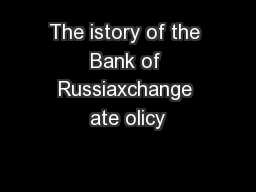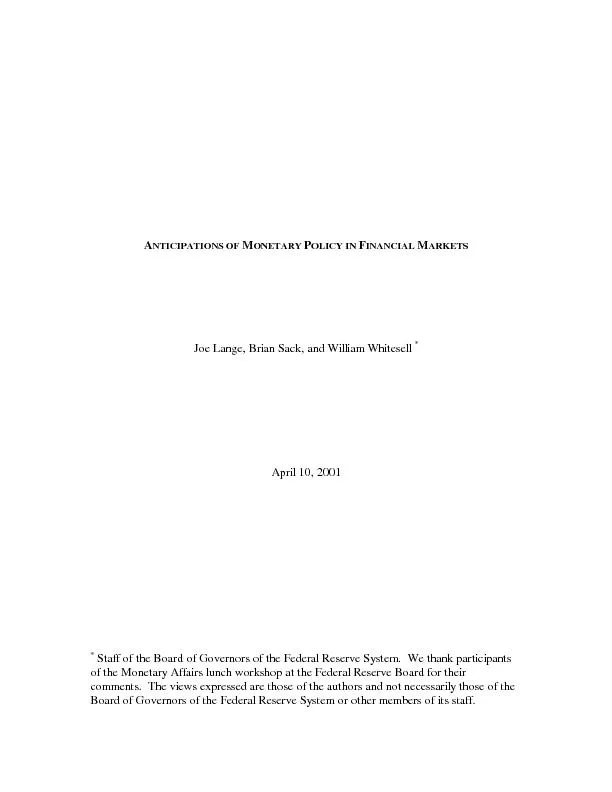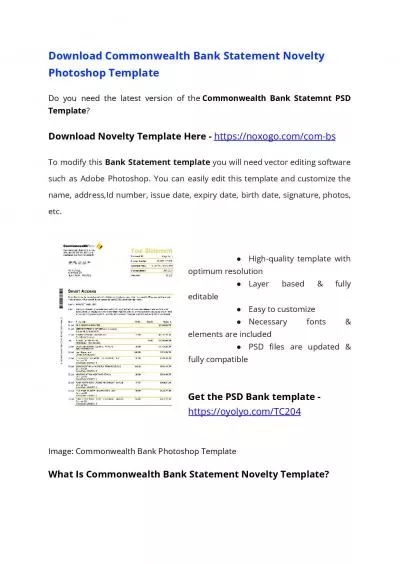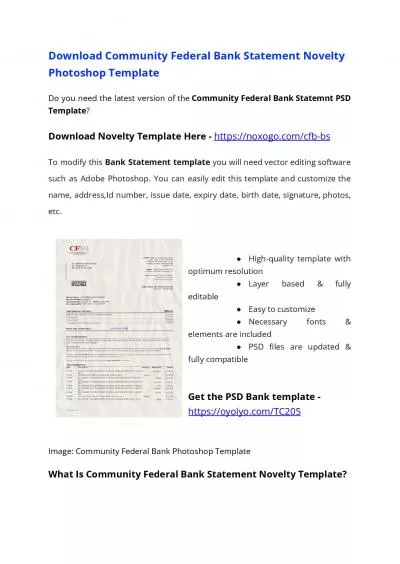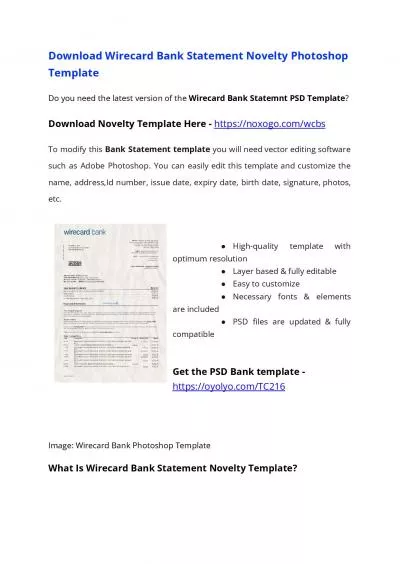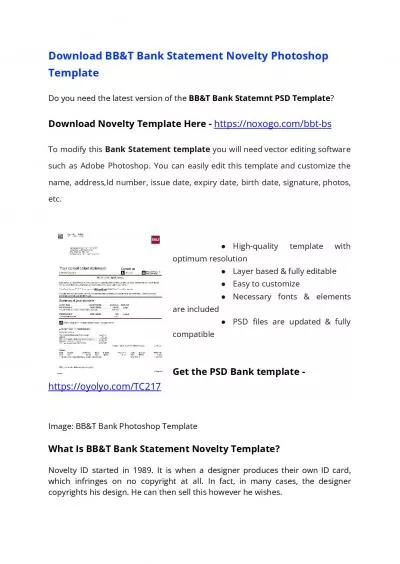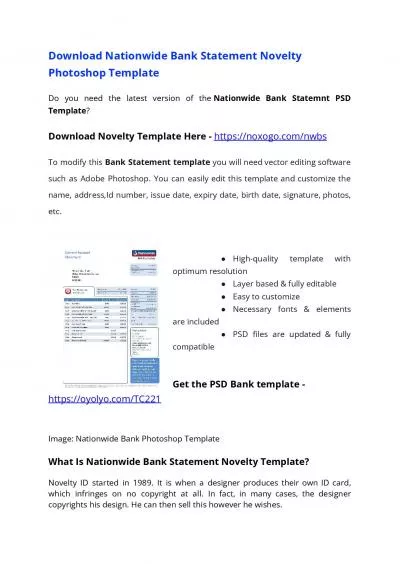PDF-The istory of the Bank of Russiaxchange ate olicy
Author : luanne-stotts | Published Date : 2015-10-14
B IS Papers No 73 293 294 BIS Papers No 73 The postoviet period of 199298 was characteriby overall economic and financial instability combined with hyperinflation
Presentation Embed Code
Download Presentation
Download Presentation The PPT/PDF document "The istory of the Bank of Russiaxchange ..." is the property of its rightful owner. Permission is granted to download and print the materials on this website for personal, non-commercial use only, and to display it on your personal computer provided you do not modify the materials and that you retain all copyright notices contained in the materials. By downloading content from our website, you accept the terms of this agreement.
The istory of the Bank of Russiaxchange ate olicy: Transcript
Download Rules Of Document
"The istory of the Bank of Russiaxchange ate olicy"The content belongs to its owner. You may download and print it for personal use, without modification, and keep all copyright notices. By downloading, you agree to these terms.
Related Documents

